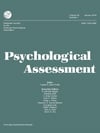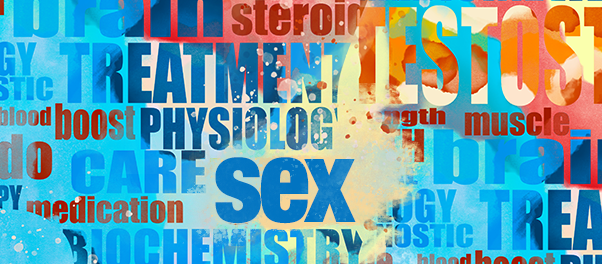Attending to the absence, rather than the presence of “shut down” behaviors, such as social isolation and self-alienation, in psychiatric inpatients is important in the prediction of future suicide attempts. This is the bottom line of a recently published article in JOURNAL NAME. Below is a summary of the research and findings as well as a translation of this research into practice. PsychA

Featured Article | Psychological Assessment | 2021, Vol. 33, No. 7, 685-690
Predicting Suicide Attempt History in a Psychiatric Inpatient sample: A Replication and Extension
Authors
Katrina A. Rufino, University of Houston-Downtown; The Menninger Clinic
Samantha E. Daruwala, University of Southern Mississippi
Joye C. Anestis, Rutgers, The State University of New Jersey
Abstract
Stanley et al. (Psychological Assessment, 2018, 20, 1249) examined Minnesota Multiphasic Personality Inventory-2-Restructured Form (MMPI-2-RF; Ben-Porath & Tellegen, Minnesota Multiphasic Personality Inventory-2 Restructured Form: Manual for administration, scoring, and interpretation, 2008/2011, University of Minnesota Press) profile configurations to predict which individuals engage in suicidal behavior using an outpatient psychiatric sample. Their results revealed that an interaction of overarousal [Hypomanic Activation (RC9) or Activation (ACT)] and shutdown [Demoralization (RCd)] indicators predicted increased history of suicide attempts. The purpose of the present study was to replicate and extend these results to a psychiatric inpatient sample in order to determine their generalizability to a clinically severe, at-risk population. The present study examined 581 valid MMPI-2-RF protocols of adult psychiatric inpatients who endorsed any level of suicide ideation on the Columbia-Suicide Severity Rating Scale (C-SSRS; Posner et al., The American Journal of Psychiatry, 2011, 168, 1266) in the 2 weeks prior to admission. Results revealed that in four of the six models tested, shutdown (Low Positive Emotions [RC2], Helplessness/Hopelessness [HLP]) but not overactivation (RC9, ACT) indicators provided an additional prediction of suicide attempt history beyond Suicidal/Death Ideation (SUI) and the covariates. The two models containing RCd did not provide additional predictive value above Suicidal/Death Ideation (SUI) with main effects or interaction terms. Overall, our results do not replicate those of Stanley et al. (Psychological Assessment, 2018, 20, 1249). Furthermore, while SUI was the best predictor of a history of suicide attempts, results indicate the main effects of RC2 and HLP were negative predictors of prior suicide attempts. Limitations of the study and clinical implications of the results are discussed.
Keywords
MMPI-2-RF, psychiatric inpatients, suicide attempts
Summary of the Research
“In exploring MMPI-2-RF profile configurations that might distinguish individuals who will or will not engage in suicidal behavior when it is desired, Stanley et al. were informed by Joiner and Stanley’s theoretical work suggesting that suicidal crises are mammalian antipredator defense reactions that activate simultaneous overarousal (i.e., agitation, irritability, insomnia, nightmares, and rages) and shutdown (i.e., social and activity withdrawal, anorexia, and mutism) states. Overarousal is theorized to occur during suicidal crises because taking one’s own life is a difficult task requiring high levels of arousal and energy. Phenomena like social isolation and self-alienation that encompass the “shutdown” state have been well-documented as predictors of suicidal thoughts and behavior and are included in many empirically supported theories of suicidal behavior. (p. 686)
“The RCd*RC9 profile configuration may be particularly useful in distinguishing which psychiatric inpatients with suicidal ideation will engage in suicidal behavior from those who will not (i.e., those at risk of moving from ideation to action)” p.686
The current study, in accordance with “recent calls in the field of psychological science for replication in research, aimed to determine if the Stanley et al. (2018) findings are replicable in a psychiatric inpatient sample. Specifically, we examined if the RCd*RC9 interaction predicts past suicide attempts after adjusting for sociodemographic variables linked to suicide risk. We also examined the incremental validity of the RCd*RC9 interaction relative to SUI, given its demonstrated clinical utility for evaluating suicide risk. We expected an RCd*RC9 interaction such that higher RCd scores would be positively associated with past suicide attempts at high levels of RC9 only. In addition, we expected these findings to remain consistent after adjusting for SUI scores. As in the Stanley et al. (2018) study, we also examined alternate models using RC2 and HLP as surrogates for RCd and ACT as a surrogate for RC9. We hypothesized that alternate models using surrogate scales would likewise significantly predict suicide attempt history, providing further support for the proposed overarousal*shutdown configuration.” p.687
“Findings reported by Stanley et al. (2018) were not replicated in a psychiatric inpatient sample. Specifically, no shutdown*overactivation interaction terms accounted for additional variance in predicting history of suicide attempts above and beyond that accounted for by SUI [suicide ideation] and other main effects.” p.688
Translating Research into Practice
“The current findings, therefore, contribute to the large body of empirical evidence that SUI is a robust and valid indicator of suicidality, and its validity and clinical utility have been demonstrated in diverse samples (e.g., outpatient, forensic inpatient, and veteran)” p.689
“Although our results do not provide support for the theorized shutdown*overactivation interaction, these findings may lend credence to the argument that the absence of demoralization and lethargy, particularly in the context of a severe mood and/or anxiety disorder, may be indicative of suicide risk” p.689
“Among this high-risk sample, lower scores on indicators typically associated with depression (RC2 and HLP) predicted a history of suicide attempts. This is a clinically useful finding—as those presenting for inpatient treatment with lower scores than would be expected on these indicators may be at the highest risk for suicidal behavior. In fact, prior work has demonstrated the highest risk periods in inpatient samples are the time period immediately following admission and immediately following discharge” p.689
“Clinicians would be well-served to continue the practice of attending to SUI scores and critical items as the primary MMPI-2-RF indicator of current and past suicidality, consistent with interpretive recommendations. In the current study, we found that lower scores on RC2 and HLP provided additional predictive validity above and beyond SUI. Notably, low T-scores (<39) on RC2 (but not HLP) are interpretable, indicating high levels of life satisfaction, confidence, energy, and well-being. Clinically in an inpatient setting, elevations on SUI could then be followed by an examination of RC2 and HLP—low scores on these scales, in the context of inpatient hospitalization, indicate an increased likelihood of a history of suicide attempts. Such a framework, provided that current findings are replicable, could be incorporated into a setting-specific interpretive strategy” p.689
Other Interesting Tidbits for Researchers and Clinicians
“This state of current evidence indicates that any additional suicide indicator needs to demonstrate incremental contribution above and beyond SUI, and researchers exploring the utility of additional suicide indicators from among MMPI-2-RF scales must account for SUI in their models” p. 689
Join the Discussion
As always, please join the discussion below if you have thoughts or comments to add!






















